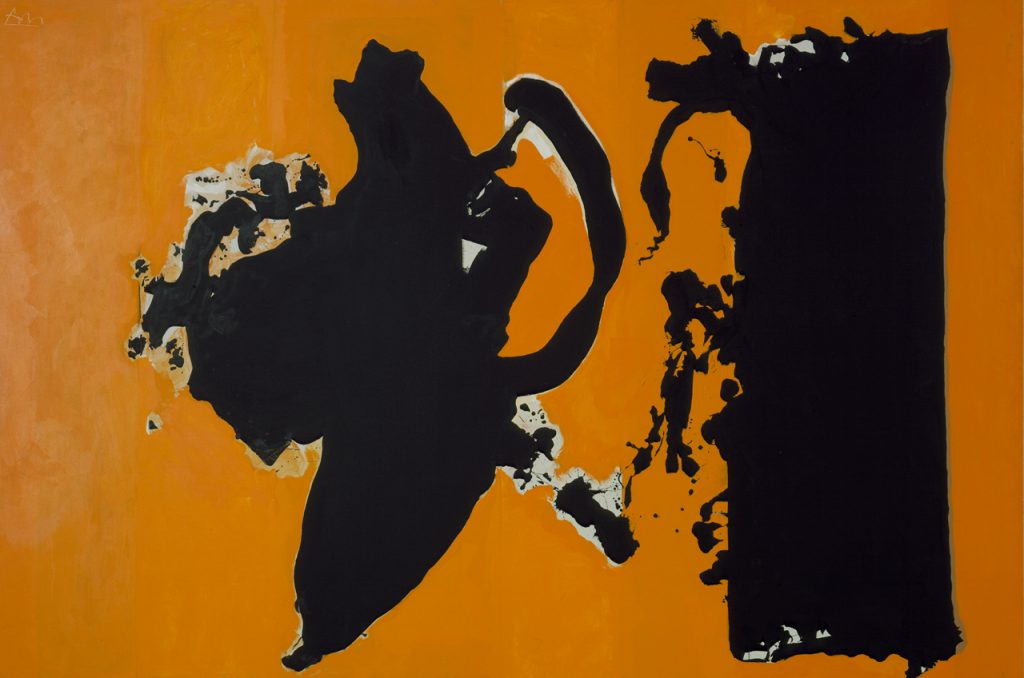Dance (work of art)
Artwork Info
Key Ideas about this Work of Art
- The contrast between the orange background and the black ink blots brings energy to this abstract painting.
- This painting is an example of abstract expressionism. Instead of making realistic-looking art, abstract expressionist artists created work that represented their emotions and attitudes.
- Many abstract expressionist artists, including Robert Motherwell, used a technique called automatic drawing to let their subconscious mind take over. Automatic drawing involves the artist letting their hand freely draw or paint without thinking about or planning what they will create. Motherwell used this technique to create Dance, to visually represent the free-flowing nature of dancing.
- Art techniques like automatic drawing were designed to reveal a person’s deepest thoughts and feelings.
Learn More
American artist Robert Motherwell is considered to be the most expressive of the abstract expressionist painters. Abstract expressionism is an art movement that lasted from the 1940s until the 1960s. Abstract expressionist artists used color, line, and shape to express their personal thoughts and feelings instead of painting things that looked real. Motherwell thought of abstract art as a way to use his imagination to make sense of things that we as humans cannot see.
Dance is an abstract painting that expresses joyful energy, much like the energetic movement of dancing. The inkblot forms relate to the artist’s lifelong interest in automatic drawing. This Surrealist technique involved letting go of any need to control one’s brush or pen and creating freely, without a plan.
Beginning in the 1940s, Motherwell was one of the leaders of the New York School, an informal group of artists that started the abstract expressionist movement in the United States. He taught new artists how to use automatic drawing, which is similar to psychological techniques like free association. At the time that Motherwell painted Dance, free association was used in psychoanalytic therapy as a way to explore the subconscious mind and reveal hidden memories.
Motherwell also taught at Black Mountain College, a progressive college in Asheville, North Carolina, that focused on the importance of arts education.
Additional Resources
Resources for Teachers:
- Watch a video about automatic drawing.
- Explore an enrichment activity about artwork and movement.
- Review a lesson plan that explores the artists of Black Mountain College, the art school in North Carolina where Robert Motherwell taught in the 1950s.
Resources for Students:
- Watch a video about abstract expressionism.
- Watch a video to learn how to paint like Robert Motherwell.
- Play the Fractal Drawing Game and create your own abstract art.

